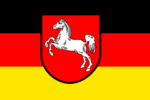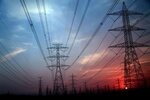News Release from windfair.net
Wind Industry Profile of
South Africa's struggle with its energy transition
41 percent - that is how high the share of renewable energies should be in South Africa in 2030. This is a sporting undertaking, as the country, with its population of almost 60 million, currently only obtains just under 11 percent of its electricity from clean sources. Right now it looks as if the noble goals will be missed by a long way, as a new analysis by Rystad Energy reveals. At the moment, the Oslo-based energy consultancy believes that South Africa will manage just 20 per cent renewables by the end of the decade.
"Although significant investments have been made in advancing renewable energy capacity and paving the way for a cleaner power mix, the current pipeline of onshore wind projects especially is unlikely to support its ambitious targets," the analysis says. The reason: currently, seemingly abundant coal still dominates South Africa's power mix, accounting for more than 80 % of electricity generation. And a rising demand for electricity ensures that the country is expanding its outdated coal-fired power plants even further. At the same time, many of the power plants operated by state-owned power utility Eskom have already exceeded their planned lifespan of 40 years - a major problem in terms of energy security and for the necessary decarbonisation of the industry.
South Africa has been suffering from massive power cuts and planned blackouts for years, which is why the government even declared a "national state of disaster" on 9 February this year, among other things to cope with the ongoing power supply crisis. Since then, a new minister has been overseeing the crisis and is pushing ahead with the restructuring of Eskom.
The just published new South African Renewable Energy Masterplan (SAREM) under the leadership of the Department of Mineral Resources and Energy and the Department of Trade, Industry and Competition, and also supported by the country's Wind Energy Association (SAWEA), should also contribute to this.
Thus, South Africa is working on the often inadequate transmission capacity. In addition the government has passed legislation to encourage private generation projects and electricity trading to reduce the dependence on Eskom and encourage private sector participation. This approach is expected to increase competition and, over time, should also lead to lower electricity prices for end consumers.
"Along with setting clear local content targets for future private and public procurement following a consultation process, the SAREM’s focus on driving industrial development, outlines existing public sector programmes and policy support with localisation objectives. Furthermore, the plan outlines interventions to attract investment and aligns to the different national and international policies of the various government department stakeholders as well as international funding and trade institutions," emphasises SAWEA CEO Niveshen Govender.

South Africa, here Table Mountain, has once again become a trend market for renewable energies (Image: Pixabay)
And the expansion of renewable energies is booming. Currently, applications for new wind and solar farms are piling up on the tables of the authorities - and many of the projects are already planned with battery storage, which could finally bring the necessary stability to the shaky power grid.
"Renewables and clean technologies hold the potential for reshaping South Africa’s energy landscape, contributing to a more sustainable future. By diversifying power generation and addressing immediate challenges, the country can pave the way for a resilient energy sector that aligns with its environmental goals and ensures a brighter future," Nivedh Das Thaikoottathil, renewable energy and power analyst at Rystad Energy, makes clear.
South Africa is getting support from international trading partners like Germany. Thus Germany's Economics Minister Robert Habeck recently visited to further expand the cooperation between the two countries on green hydrogen and power-to-X products. "This serves to accelerate economic development and reliable power supply in South Africa as well as sustainable and diversified energy supply in Germany. The commitment in this area complements the Federal Government's efforts to support South Africa in the energy transition as a whole. To this end, we are currently planning to make an additional 30 million euros available from the International Climate Initiative," said Habeck.
- Author:
- Katrin Radtke
- Email:
- press@windfair.net
- Keywords:
- South Africa, energy transition, wind, solar, hydrogen, Germany, support, Eskom, electricity, production, renewable energy, target, coal, resturcture



























